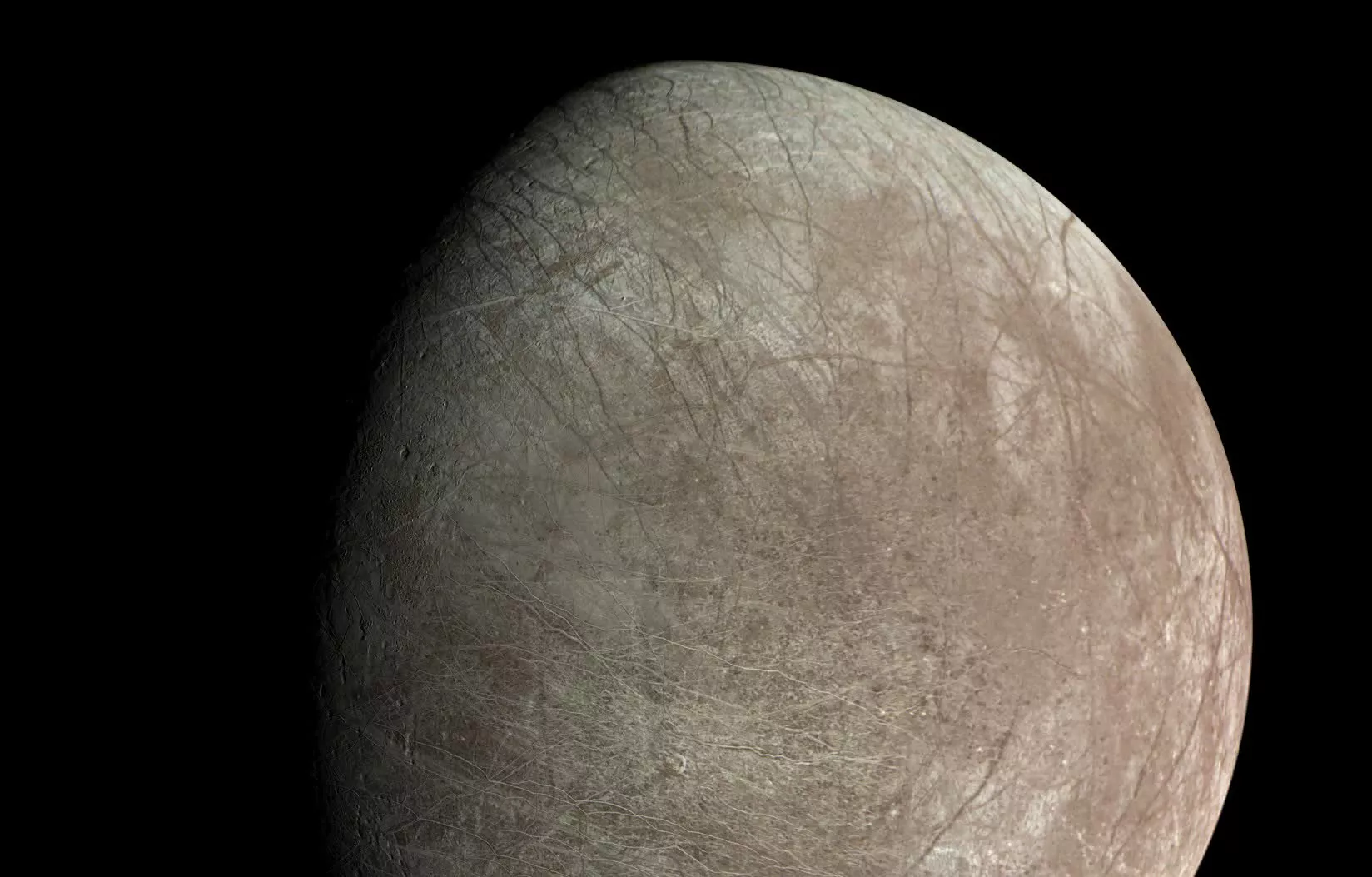
What just happened? NASA’s Juno spacecraft has captured the closest images of Jupiter’s moon Europa in over two decades. These images reveal bizarre surface features that could be signs of a shifting icy crust atop an interior ocean.
The high-resolution pictures, taken during Juno’s flyby of Europa on September 29, 2022, seem to support the “true polar wander” theory – that Europa’s ice shell is essentially adrift from its rocky mantle below.
“This is the first time these fracture patterns have been mapped in the southern hemisphere, suggesting that true polar wander’s effect on Europa’s surface geology is more extensive than previously identified,” said Candy Hansen, a Juno co-investigator at the Planetary Science Institute. Hansen was referring to the irregularly distributed steep-walled pits and fracture lines spotted near Europa’s equator by Juno’s visible light camera, JunoCam.
If true, this means Europa’s outer ice layer is decoupled and mobile compared to the moon’s inner layers, leaving the shell under extreme stresses that cause predictable fracture patterns. A subsurface liquid water ocean, suspected to slosh around beneath the ice, could facilitate this mobility.
One particularly striking image from Juno’s Stellar Reference Unit (SRU) navigation camera depicts a 23-by-42-mile jumbled region the team nicknamed “the Platypus.” This young chaotic terrain shows signs of potential cryovolcanic activity, with collapsed ridges, jumbled ice blocks up to 4.3 miles across, and reddish stains that could be from recent eruptions of briny water from the interior ocean below.
“These features hint at present-day surface activity and the presence of subsurface liquid water on Europa,” said Heidi Becker, SRU lead co-investigator at NASA’s Jet Propulsion Laboratory. “The SRU’s image is a high-quality baseline for specific places NASA’s Europa Clipper mission and ESA’s (European Space Agency’s) Juice missions can target to search for signs of change and brine.”
The SRU image also reveals what looks like evidence of past eruptions about 31 miles north of the Platypus – double ridges flanked by dark deposits hypothesized to be markings from previous plumes of water vapor venting through the ice.
Taken together, the Juno images paint a picture of an active, dynamic surface being continuously reshaped as Europa’s miles-thick outer ice layer moves over an interior ocean.
NASA’s forthcoming Europa Clipper mission, set to launch in late 2024, is designed to investigate whether Europa could harbor conditions suitable for life. Meanwhile, the European Space Agency’s Jupiter Icy Moons Explorer (Juice), recently launched, will reach the Jovian system in 2031 to study Europa along with other major moons like Ganymede.
However, the new images have already overturned at least one previous interpretation. JunoCam showed that a 13-mile-wide crater named Gwern, one of Europa’s few confirmed impact craters, is actually just a set of intersecting ridges casting an oval shadow.










